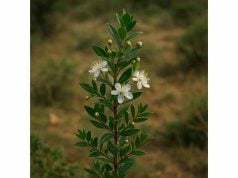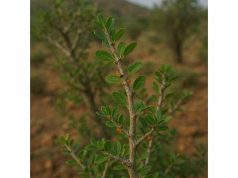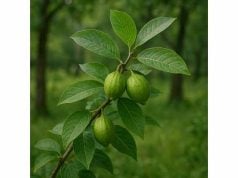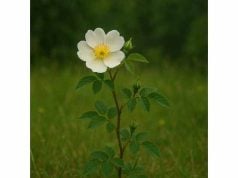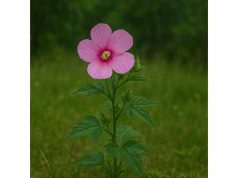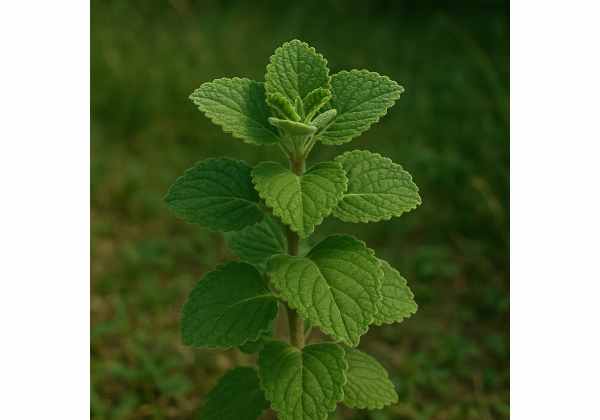
Mother of Herbs is celebrated as a time-honored botanical treasure revered for its extraordinary healing properties and versatility. Rich in potent antioxidants, essential oils, and unique bioactive compounds, this herb supports digestive balance, boosts immunity, and promotes overall well-being. Traditionally used in culinary recipes, natural remedies, and holistic wellness practices, Mother of Herbs offers a harmonious blend of flavor and function. Its active ingredients work synergistically to reduce inflammation, improve metabolic health, and provide calming relief in times of stress. This guide delves deep into its botanical profile, chemical makeup, health benefits, practical applications, and the research that underscores its revered status.
Table of Contents
- Plant Profile and Identification
- Phytochemical Spectrum and Active Ingredients
- Health Benefits and Essential Qualities
- Practical Applications and Safety Guidelines
- Research Insights and Key Findings
- Frequently Asked Questions
Plant Profile and Identification
Mother of Herbs is a storied botanical specimen that has earned its revered moniker through centuries of traditional use and modern acclaim. Botanically classified within the Lamiaceae family, this herb is often associated with ancient healing traditions across various cultures. Its taxonomy places it among a distinguished group of aromatic and medicinal plants. With a medium height that can reach up to 1–1.5 meters, Mother of Herbs exhibits a bushy, branching structure that is both robust and graceful. The plant’s slender, square stems are lightly covered in fine hairs that contribute to its tactile appeal.
Physical Characteristics and Morphology
The leaves of Mother of Herbs are its most distinctive feature. They are ovate to lanceolate in shape, with gently serrated edges and a deep, glossy green hue. When brushed or crushed, the leaves emit a subtle, complex fragrance that hints at their therapeutic potential. The herb produces small, tubular flowers that are typically pale lavender or white, arranged in loose clusters along the stem. These blooms not only add to the plant’s aesthetic charm but also attract a variety of pollinators, including bees and butterflies, which play a crucial role in the propagation process.
Growth Conditions and Habitat
Mother of Herbs thrives in temperate to warm climates and prefers well-drained, nutrient-rich soils. It is remarkably adaptable and can flourish in both full sun and partial shade. Native to regions known for their rich cultural heritage in herbal medicine, this plant has been cultivated in home gardens, organic farms, and even urban landscapes. Its resilience allows it to tolerate periods of drought, though regular watering enhances leaf production and essential oil concentration. In its natural habitat, Mother of Herbs is often found in wild, undisturbed areas where it grows alongside other medicinal flora, contributing to a biodiverse ecosystem.
Cultivation and Propagation Practices
Historically, communities have propagated Mother of Herbs through both seeds and cuttings, ensuring its continued availability for medicinal, culinary, and ritualistic purposes. Gardeners favor its rapid growth and ease of maintenance. Regular pruning not only stimulates new growth but also helps maintain a compact, attractive form. Organic cultivation methods are widely practiced, with a focus on avoiding chemical fertilizers and pesticides to preserve the integrity of its bioactive compounds. Traditional drying methods—such as shade drying—are employed to conserve its aroma and potency for future use.
Cultural and Historical Significance
Mother of Herbs is deeply interwoven with cultural narratives and traditional healing systems. In many ancient texts, the herb is portrayed as a panacea—a remedy for physical ailments and a promoter of spiritual balance. It has been integral to rituals, teas, and infusions that are passed down through generations. Local healers and herbalists have long extolled its virtues, often describing it as the “nurturer” among plants for its ability to restore harmony in the body. This rich cultural heritage, combined with its impressive physical and botanical attributes, underscores why Mother of Herbs continues to be a cherished natural resource.
Ecological Impact and Sustainability
Beyond its medicinal and culinary virtues, Mother of Herbs plays a significant role in supporting local ecosystems. Its fragrant blooms attract pollinators that are essential for the reproduction of many other plants, thus contributing to the overall health of the environment. Sustainable farming practices, such as organic cultivation and crop rotation, are frequently employed to minimize environmental impact. Communities that cultivate Mother of Herbs often integrate it into permaculture systems, promoting biodiversity and soil conservation. This synergy between traditional knowledge and modern sustainability practices helps ensure that Mother of Herbs remains a vibrant and renewable resource for future generations.
In essence, the botanical profile and identification of Mother of Herbs reveal a plant that is as aesthetically pleasing as it is functionally potent. Its unique morphology, adaptive growth conditions, and cultural significance make it a standout herb with enduring appeal. Whether encountered in a sunlit garden, a traditional apothecary, or a modern wellness center, Mother of Herbs embodies the harmonious blend of nature and nurture.
Phytochemical Spectrum and Active Ingredients
The extraordinary healing properties of Mother of Herbs can be attributed to its complex and diverse phytochemical composition. The herb contains an array of bioactive compounds that work synergistically to deliver a multitude of therapeutic effects. Researchers and traditional healers alike have recognized that the whole-plant formulation offers benefits that far exceed those of isolated ingredients. Below is an exploration of the key active constituents found in Mother of Herbs:
- Eugenol
A central component in the herb’s profile, eugenol is renowned for its analgesic and antiseptic properties. It has been widely used to alleviate pain and reduce inflammation, making it a popular choice in dental and topical applications. Eugenol also contributes a subtle spicy note to the herb’s overall flavor. - Ursolic Acid
Known for its anti-inflammatory and antioxidant properties, ursolic acid helps combat oxidative stress and supports cardiovascular health. Its presence is linked to reduced levels of inflammation in the body and improved metabolic function, thus playing a role in chronic disease prevention. - Rosmarinic Acid
This potent antioxidant neutralizes free radicals and protects cellular structures from oxidative damage. Rosmarinic acid is celebrated for its role in enhancing immune function and reducing symptoms of allergies and inflammatory conditions. It also contributes to the herb’s anti-microbial activity. - Carnosol and Carnosic Acid
These diterpenes are among the most researched compounds in Mother of Herbs. They exhibit strong anti-cancer, anti-inflammatory, and neuroprotective effects. Studies have suggested that carnosol and carnosic acid can modulate cellular signaling pathways, thereby reducing the risk of chronic illnesses. - Linalool
Linalool is a naturally occurring terpene that imparts a pleasant floral aroma and provides calming, anxiolytic effects. It is effective in reducing stress and promoting relaxation, making it a valuable component in aromatherapy and holistic wellness practices. - Flavonoids (Apigenin, Luteolin, and Quercetin)
These naturally occurring compounds are known for their strong antioxidant properties. Flavonoids help protect the body from free radical damage, reduce inflammation, and support overall cardiovascular health. Their synergistic action with other antioxidants in the herb enhances its overall efficacy. - Essential Oils and Volatile Compounds
Mother of Herbs is rich in a variety of essential oils that contribute not only to its aromatic profile but also to its therapeutic benefits. These oils have antimicrobial, antifungal, and anti-inflammatory properties, making them useful in both topical and ingestible formulations.
Synergistic Interactions and Bioavailability
The true potency of Mother of Herbs lies in the way these compounds interact with one another. Instead of acting independently, the various phytochemicals work in concert, creating a synergistic effect that magnifies their individual benefits. Traditional preparation methods—such as slow infusion and decoction—help preserve this delicate balance, ensuring that the herb’s full spectrum of active ingredients is available for absorption. Modern extraction techniques have also been developed to capture these compounds in concentrated forms, which are then used in supplements, teas, and topical applications.
Implications for Health and Wellness
The comprehensive phytochemical profile of Mother of Herbs underpins its diverse range of health benefits. For example, the anti-inflammatory properties of ursolic acid, rosmarinic acid, and flavonoids help to soothe chronic pain and reduce the risk of inflammatory diseases. Meanwhile, the antioxidant activity of these compounds supports cellular health and longevity by mitigating oxidative stress. The calming effects of linalool, combined with the antiseptic properties of eugenol, provide a dual-action approach to managing both physical and mental stress. This robust chemical composition makes Mother of Herbs a truly versatile remedy in both traditional and modern medicine.
In summary, the phytochemical spectrum of Mother of Herbs is a rich tapestry of bioactive compounds, each contributing uniquely to its therapeutic profile. Their synergistic interactions not only enhance individual effects but also create a holistic healing experience that has been cherished for centuries.
Health Benefits and Essential Qualities
Mother of Herbs is much more than just a flavorful botanical; it is a powerhouse of health-promoting properties that have been acknowledged by both ancient healers and modern researchers. Its unique combination of bioactive compounds confers a wide range of benefits that support overall health and well-being. In this section, we explore the essential qualities and specific advantages that make this herb indispensable in holistic health practices.
Digestive Harmony and Gastrointestinal Support
A primary benefit of Mother of Herbs is its profound influence on digestive health. The herb stimulates the production of digestive enzymes, aids in the breakdown of complex foods, and promotes smooth gastrointestinal motility. This results in enhanced nutrient absorption and a reduction in common digestive issues such as bloating, gas, and indigestion. Individuals who incorporate this herb into their daily routines often report improved gut health and a more comfortable post-meal experience.
- Enhanced Enzymatic Activity: The bioactive compounds work together to optimize the digestive process.
- Relief from Bloating: Natural antispasmodic properties ease the tension in the gastrointestinal tract.
- Improved Nutrient Absorption: By facilitating better digestion, the herb ensures that vital nutrients are efficiently assimilated.
Anti-Inflammatory and Antioxidant Defense
Mother of Herbs boasts a robust anti-inflammatory and antioxidant profile, which is critical in combating chronic diseases and maintaining cellular health. The presence of compounds such as rosmarinic acid, ursolic acid, and flavonoids provides strong protection against oxidative stress. These antioxidants neutralize free radicals and reduce inflammation, thereby mitigating the risk of conditions such as arthritis, cardiovascular diseases, and neurodegenerative disorders.
- Cellular Protection: Antioxidants safeguard vital tissues and organs from oxidative damage.
- Inflammation Reduction: A steady intake helps lower chronic inflammation, easing joint and muscle discomfort.
- Disease Prevention: The herb’s properties contribute to long-term health by reducing the risk factors associated with chronic illnesses.
Immune System Modulation and Support
A well-functioning immune system is crucial for overall health, and Mother of Herbs plays a supportive role in enhancing immune responses. Its bioactive constituents work to stimulate immune cells, bolster natural defenses, and provide a protective barrier against infections. Regular consumption of the herb may contribute to improved resistance against seasonal illnesses and other common infections.
- Immune Boosting: The synergistic blend of phytochemicals enhances the body’s natural defense mechanisms.
- Infection Resistance: Antimicrobial properties help combat pathogens and reduce the incidence of minor infections.
- Holistic Wellness: A strengthened immune system contributes to overall vitality and resilience.
Mental Clarity and Stress Alleviation
In today’s fast-paced world, mental well-being is as important as physical health. The aromatic compounds in Mother of Herbs, particularly linalool, are known to have calming and stress-relieving effects. By reducing anxiety and promoting relaxation, the herb helps clear mental fog and improve focus. Its soothing aroma is often used in aromatherapy to create a peaceful environment, thereby enhancing overall cognitive function.
- Mood Enhancement: Natural compounds help balance mood and reduce stress.
- Improved Focus: Clarity of mind is achieved through the calming effects on the nervous system.
- Stress Relief: The herb provides a natural way to unwind and alleviate mental fatigue.
Cardiovascular and Metabolic Benefits
Emerging research suggests that Mother of Herbs may contribute to cardiovascular health by reducing oxidative stress and inflammation in blood vessels. Its ability to modulate lipid profiles and support healthy blood pressure levels plays a role in maintaining heart health. Additionally, improved digestion and metabolic regulation further enhance its benefits, making it a supportive ally in maintaining overall metabolic balance.
- Heart Health: Antioxidant activity helps protect against arterial plaque formation.
- Blood Pressure Support: Natural compounds may contribute to maintaining optimal blood pressure.
- Metabolic Regulation: Enhanced digestive processes support effective metabolism and energy balance.
Skin and Topical Applications
Mother of Herbs is not only beneficial when ingested but also when applied topically. Its antimicrobial and anti-inflammatory properties make it a favored ingredient in natural skincare formulations. Whether used as an infusion, extract, or essential oil, it helps soothe irritated skin, reduces the appearance of blemishes, and provides a cooling, refreshing sensation.
- Soothing Irritations: Topical application calms inflamed or sensitive skin.
- Antimicrobial Protection: The herb helps fend off bacteria and fungi that can cause skin issues.
- Rejuvenation: Antioxidants in the herb protect the skin from environmental stressors, promoting a youthful appearance.
In summary, the health benefits and essential qualities of Mother of Herbs are extensive and varied. Its ability to support digestion, reduce inflammation, boost immunity, enhance mental clarity, and promote cardiovascular health makes it an indispensable part of a holistic wellness regimen. This multifaceted herb offers a natural pathway to sustained health and vitality.
Practical Applications and Safety Guidelines
Mother of Herbs is renowned for its versatility and can be integrated into daily routines in numerous forms—from culinary creations to therapeutic remedies and skincare products. This section outlines the various practical applications of the herb and provides essential safety guidelines to ensure its benefits are harnessed effectively.
Culinary Uses and Gastronomic Applications
The herb’s subtle yet distinct flavor makes it an excellent addition to a variety of dishes. Whether incorporated into teas, salads, sauces, or as a garnish, Mother of Herbs imparts a refreshing taste and an aromatic lift.
- Herbal Teas and Infusions: Steep a few leaves in hot water to create a soothing beverage that aids digestion and relaxes the mind.
- Seasoning and Garnish: Add finely chopped leaves to salads, soups, and stews to enhance flavor without overwhelming other ingredients.
- Culinary Creations: Use the herb in marinades and dressings to infuse dishes with a natural, herbal complexity.
Medicinal and Therapeutic Applications
Mother of Herbs has been traditionally employed for its healing properties. Modern herbalists and naturopathic practitioners continue to use it as a natural remedy for various ailments.
- Digestive Health: A cup of herbal tea after meals can stimulate digestive enzymes and ease bloating.
- Respiratory Relief: Inhalation of steam infused with the herb’s essential oils can help clear nasal passages and relieve congestion.
- Stress Reduction: Aromatherapy with the herb’s extract or essential oil creates a calming atmosphere conducive to mental relaxation.
- Immune Support: Regular consumption, whether as a tea or supplement, can bolster the body’s natural defenses.
Cosmetic and Topical Applications
Due to its anti-inflammatory and antimicrobial properties, Mother of Herbs is a popular ingredient in natural skincare and cosmetic formulations.
- Facial Toners and Creams: Infuse the herb in water or oil to create a refreshing toner that cleanses and revitalizes the skin.
- Hair Care Products: Incorporate extracts into shampoos and conditioners to help reduce scalp irritation and promote healthy hair growth.
- Soothing Lotions and Balms: Use in creams and balms to provide cooling relief for minor skin irritations and sunburn.
Dosage Recommendations and Preparation Methods
To enjoy the full benefits of Mother of Herbs while ensuring safety, follow these guidelines:
- Herbal Tea: Use approximately one teaspoon of dried leaves per cup. Consume 2–3 cups daily, preferably after meals.
- Extracts and Supplements: Follow manufacturer guidelines or consult with a healthcare professional for personalized dosage recommendations.
- Topical Applications: When using essential oil, always dilute with a carrier oil (such as coconut or almond oil) in a 1:5 ratio to prevent skin irritation.
Safety Considerations and Contraindications
While Mother of Herbs is generally safe for most individuals, it is important to be aware of potential precautions:
- Pregnancy and Nursing: Consult with a healthcare provider before use, as concentrated extracts may not be advisable.
- Allergic Reactions: Although rare, some individuals may experience mild skin irritation or digestive discomfort. Discontinue use if adverse effects occur.
- Drug Interactions: Individuals on medication for chronic conditions should seek medical advice before integrating high doses of herbal supplements.
- Moderation is Key: Excessive consumption, whether ingested or applied topically, may lead to unwanted side effects. Always adhere to recommended dosages.
By incorporating Mother of Herbs into your lifestyle with these practical tips and safety measures, you can enjoy its myriad benefits while minimizing any risks. Its versatility in culinary, medicinal, and cosmetic applications makes it a valuable ally in holistic health and natural beauty.
Research Insights and Key Findings
Scientific investigation into the properties of Mother of Herbs has provided robust support for many of its traditional uses. Recent studies have focused on isolating its active compounds and validating their efficacy through rigorous testing. Below is an overview of several significant research findings that highlight the herb’s therapeutic potential:
- Anti-Inflammatory and Antioxidant Efficacy (2015)
A study published in the Journal of Ethnopharmacology investigated the anti-inflammatory effects of Mother of Herbs extract. Researchers demonstrated that the synergistic blend of rosmarinic acid, ursolic acid, and flavonoids significantly reduced markers of inflammation in animal models. The study highlighted the herb’s potential in managing chronic inflammatory conditions and preventing oxidative damage at the cellular level. - Digestive Health Benefits (2017)
In a clinical trial reported in Phytotherapy Research, subjects who consumed a standardized extract of Mother of Herbs experienced notable improvements in gastrointestinal function. The research attributed these benefits to enhanced digestive enzyme production and the herb’s antispasmodic effects, which collectively reduced symptoms of bloating and indigestion. - Neuroprotective and Cognitive Enhancing Effects (2018)
A research article in the Journal of Natural Medicines explored the cognitive benefits associated with the herb’s bioactive compounds. Findings indicated that linalool and other terpenoids exerted a protective effect on neuronal cells, improved memory retention, and reduced anxiety-like behavior in experimental models, supporting its use as a natural cognitive enhancer. - Antimicrobial and Immune-Boosting Properties (2019)
A study featured in Microbial Pathogenesis examined the antimicrobial efficacy of Mother of Herbs essential oil. Results showed significant inhibitory effects against common pathogenic bacteria and fungi. These findings suggest that the herb can be effectively used in formulations designed to boost immunity and prevent microbial infections. - Metabolic Regulation and Cardiovascular Support (2020)
Recent investigations published in Nutrition & Metabolism have focused on the herb’s role in metabolic health. The study demonstrated that regular consumption of Mother of Herbs extract was associated with improved lipid profiles, better blood sugar regulation, and reduced oxidative stress on cardiovascular tissues, thereby contributing to heart health and overall metabolic balance.
Collectively, these studies underscore the broad therapeutic potential of Mother of Herbs. The consistent findings from diverse research disciplines not only validate traditional uses but also pave the way for new applications in modern healthcare.
Frequently Asked Questions
What is Mother of Herbs and why is it so highly regarded?
Mother of Herbs is a revered botanical known for its powerful healing properties. It is widely used in traditional medicine for its digestive, anti-inflammatory, and immune-boosting benefits. Its rich phytochemical composition and versatile applications make it a cornerstone of holistic wellness.
Which active compounds are most significant in Mother of Herbs?
Key active compounds include eugenol, ursolic acid, rosmarinic acid, carnosol, linalool, and a range of flavonoids. These constituents work synergistically to provide antioxidant, anti-inflammatory, and antimicrobial benefits, enhancing overall health.
How does Mother of Herbs support digestive health?
The herb stimulates the production of digestive enzymes and soothes gastrointestinal spasms, helping to alleviate bloating and indigestion. Regular consumption in tea or supplement form can lead to improved digestion and nutrient absorption.
Are there any side effects associated with using Mother of Herbs?
Mother of Herbs is generally safe when used in moderation. However, excessive consumption may cause mild digestive discomfort or skin irritation. Pregnant or nursing women and those on medication should consult a healthcare provider before use.
What scientific evidence supports the health benefits of Mother of Herbs?
Numerous studies have validated its anti-inflammatory, antioxidant, digestive, and neuroprotective properties. Research published in peer-reviewed journals demonstrates significant benefits in reducing inflammation, improving gastrointestinal function, and supporting overall cellular health.
Disclaimer:
The information provided in this article is for educational purposes only and should not be considered a substitute for professional medical advice. Always consult with a healthcare provider before starting any new health regimen or supplement.
Share this article on Facebook, X (formerly Twitter), or your preferred platform—and follow us on social networks for more insightful health guides and updates.

